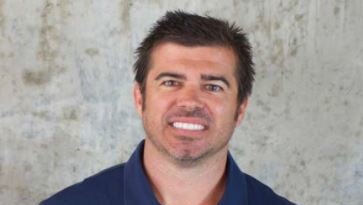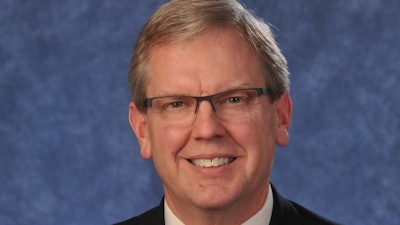
It’s a word that we’ve all heard a lot over the past three years: resilience.
Throughout 2020, companies and business owners alike had to adjust their business models to survive the pandemic and its consequent challenges. As the situation morphed into a variety of surprising issues, the industry tried to navigate the ever-changing business environment. Many thought 2021 would finally bring resolution. Instead, new challenges presented themselves in the form of supply chain issues, labor shortages and limited equipment supplies.
Now, we’ve entered 2022 with the hope that rental business owners and the rental industry may get a break and not have to be resilient. Sure, it’s a positive sentiment and an even better attribute, but the definition of “resilient” is being able to withstand or recover quickly from difficult conditions—and we’ve had enough difficult conditions in the last three years to cover a lifetime.
Thankfully, industry experts are predicting a strong 2022 for the construction and rental industries despite a few nagging challenges. According to a recent study, the global equipment rental market is set to gain traction to a projected $145 billion by 2026. One company profiting from the uptick in rental popularity has been United Rentals.
In a January report, United Rentals claimed $2.78 billion in total revenue during the 2021 fourth quarter, up from $2.28 billion in the 2020 fourth quarter. Fourth quarter rental revenue was $2.31 billion, a 24.7% increase compared to $1.85 billion during the same time last year.
Rental revenue in 2021 was $8.21 billion, up from $7.14 billion in 2020, and total revenue for 2022 is expected to range from $10.65 billion to $11.05 billion.
“Our 2022 guidance reflects the optimism of our customers, as well as our confidence in leveraging our competitive advantages over the longer term,” said Matthew Flannery, United Rentals CEO.
Respondents to the Baird/RER Q4 equipment rental survey, released in January, confirm Flannery’s sentiment. They expect rental revenue to grow 7% year-over-year in the first quarter of 2022. Fleet spending is expected to increase 7.6% over the next six months, and an increase in spending on access equipment is predicted to be about 4.9%.
However, there are still industry dynamics that might impede tremendous growth. Issues such as equipment availability and the current labor shortage crisis could make it difficult for rental business owners to capitalize on what should be a robust environment.
In fact, Baird/RER survey respondents said that the labor shortage has led to higher wages, which has impacted rental rates and margins and lost business. Thirty-seven percent say they don’t have enough workers to effectively run their business, and 43% say they believe business is being lost because customers don’t have enough labor.
Another source, The Civil Quarterly from Dodge Construction Network, reveals more concern about finding skilled workers. Seventy-two percent of civil contractors expect difficulty finding skilled workers, an increase over the 58% who reported that concern one year ago. And 89% believe that the cost of workers will increase in the first half of 2022.
However, with great difficulty comes that word we used in the beginning of the article: resilience. And manufacturers are stepping up to the challenge with innovative ways of dealing with the labor shortage. One such method is donating to beneficial charities. For example, Crew Collaborative, a nonprofit organization aimed at strengthening the construction workforce, has received a $15,000 grant from The Toro Co. Foundation to support its efforts.
Apps and job boards are more tools that could aid in modernizing the workforce recruitment process. Take BoomNation, for example, which is a new app community where skilled workers find applicable content, can communicate with employers and find jobs within their field of work. Another exciting endeavor is the American Rental Association’s job board, which hopes to grow the workforce and ensure the future success of the equipment and event rental industries.
Tackling the job shortage at its source could be a solution to a problem. EquipmentShare announced plans to launch an apprenticeship program in January 2022. Combined with their internship program and veterans recruitment efforts, this new venture will be a part of the company’s mission to develop a skilled workforce pipeline for recruitment purposes.
When all is said and done, the rental industry is on the rise. The electrification of equipment will open new avenues of business, the sustainability of rental will push boundaries and contribute to a changing world, and business owners and companies alike will continue to be resilient in the aftermath of the pandemic.
If the last three years have taught us anything, it’s that things have changed (and will continue to), but we can still come together, grow and succeed.
So, in the spirit of “coming together,” I wanted to gather more insight into the mindset of manufacturers heading into 2022 and beyond. I spoke to industry members about the trends, topics and challenges they predict for the upcoming year.
 Kyle Clements, president of Quipli.Quipli
Kyle Clements, president of Quipli.Quipli
Kyle Clements, president of Quipli
1. What is your outlook for the rental industry in 2022?
It’s an exciting time to be in rental! I believe that the rental industry will continue to outperform in 2022 with strong consumer demand and increased equipment and software investment heading into the year. With equipment shortages throughout the world, coupled with the construction boom, utilization and uptime will be more important than ever–something that has already been at the forefront of the rental industry for years.
Rental has additional long-term tailwinds from the environmental community, as rental continues to prove it’s a more sustainable and environmentally friendly solution with reduced CO2 emissions throughout a rental asset’s life cycle compared to an owned unit.
2. What do you think will be the year's three big movements and/or trends?
● The power of the internet: The rental industry had a decade of e-commerce boom in just the past two years, something that will continue into 2022
● Empowering local entrepreneurs: Small business applications have soared to record heights since 2020 (over 5 million applications in 2021), many of which are individuals starting rental companies for the first time
● Focus on utilization: How do rental companies get more done with less (less equipment, labor, etc.) in 2022?
3. What will be the rental industry's biggest challenges, and how will the industry overcome them?
Inventory availability is key in 2022. Catch me if you’ve heard the phrase “supply chain issues” in the past six months.
Being able to maximize your equipment uptime, utilization and access for renters is the name of the game this year. I believe the rental companies that are able to lean into technology to drive improved customer experiences can deliver long-term customer loyalty well past 2022.
4. What is, in your opinion, the "word" of the year for rental?
“Access” is my 2022 word for the rental industry for two reasons.
First, I believe the rental market will continue to expand dramatically with more homeowners and contractors experiencing access to rental for the first time. I think the adoption of easier renting experiences powered by technology and the large national chains investing in this segment will enable homeowners as well as commercial contractors like never before.
Secondly, the rental companies that have access to quality inventory in 2022 will be well positioned to meet the high demands expected from the market. The companies that had the foresight to plan ahead 12 months ago are set to have a strong 2022.
 Peter Maginnis, general manager of Makinex Construction Products.Makinex
Peter Maginnis, general manager of Makinex Construction Products.Makinex
Peter Maginnis, general manager of Makinex Construction Products
1. What do you think will be the year's three big movements and/or trends?
- Battery tools, which is why we developed our mobile charging pod as battery usage/charging and storage can be a challenge for rental companies.
- Operational efficiencies due to the labor shortage. Products like our powered hand truck lifting device can help with staffing shortages and keep rental companies operating at full capacity with less manpower.
- Sustainability is in everyone’s mission statement and a main focus. This will be a big trend moving forward in the Americas.
2. What will be the rental industry's biggest challenges, and how will the industry overcome them?
The uncontrollables. For example, government mandates, shipping times and expenses and component supply.
 Wayne Harris, CEO, Point of Rental.Point of Rental
Wayne Harris, CEO, Point of Rental.Point of Rental
Wayne Harris, CEO of Point of Rental
1. What is your outlook for the rental industry in 2022?
The rental industry is healthy overall. On the equipment side, the big challenge–supply chain issues–provides a short-term benefit in that it’s affecting contractors too, pushing them to rent equipment more because they can’t buy new. Of course, this will raise the average fleet age for rental companies, which will increase repair costs, parts ordering and mechanic needs. Overall, though, there’s definitely a positive outlook in all the major rental sectors after the last couple of years.
2. What do you think will be the year’s biggest technology trends?
We’re seeing more interest in automated parts management this year. Interest in SaaS options to run various aspects of an operation is also pretty big–in part, because coverage networks are getting better and also because servers are affected by the same supply chain shortages affecting other physical products.
3. What will be the rental industry’s biggest challenges, and how will the industry overcome them?
There are two main issues: Getting great people and getting great equipment (and the parts that help maintain it). The supply chain issues are a bit beyond rental companies’ control, but as I mentioned, in the short term, they’ve actually been kind of beneficial in that they’ve driven up demand for rental equipment.
Getting great people has always been a challenge. Some are finding success with gig job apps–it’s been useful for no-training-required tasks, freeing up your more experienced staff to take care of the things they’re trained for. Some are getting creative with their ads and emphasizing the benefits of a job that can involve some hard labor. And, of course, business leaders continue to find ways to run their businesses with fewer people by increasing their efficiency, either by implementing productivity tools like rental software or streamlining other processes.
4. What is, in your opinion, the “word” of the year for rental?
Green. As interest grows in environmental friendliness, rental is in a position to show its leadership in that space. Allowing lots of people to use one item again and again reduces production needs and conserves resources. It’s also the color of money (at least here in America), and the overall outlook for the industry is positive, so businesses should see their fortunes improve in 2022.
 Simon Meester, president of Genie.Genie
Simon Meester, president of Genie.Genie
Simon Meester, president of Genie
1. What do you think will be the year's 3 biggest innovations?
In 2022, I think you’ll see a continuation of some trends that have been developing around the industry, and that is a continued focus on: (1) electrification; (2) digitalization; and (3) total cost of ownership.
Electrification certainly isn’t anything new, but the pace of adoption and interest in electrification is continuing to accelerate. And really, that’s because you’re seeing a convergence of several factors: jobsite regulations are becoming increasingly stringent, which is driving demand; electrified equipment can offer better and more efficient performance in many instances; and costs to implement the technology are coming down. Finding that balance where performance, cost and demand come together—so that we can introduce the right products at the right time to add value for our customers—is really at the core of Genie’s approach to electrification.
The second thing I mentioned was digitalization. Again, this certainly isn’t new, but telematics continues to be more widely adopted and used by companies in the aerial rental market to manage, maintain and utilize their assets more effectively and efficiently. Genie was among the first to bring that to market, and we have a substantial congregation of customers using our Lift Connect telematics for a variety of use cases. This is an area where there are a lot of possibilities ahead, and it will be exciting to continue to be a part of this evolution.
And finally, the third thing I mentioned was total cost of ownership. This isn't a big, flashy innovation. Rather, it's thinking very intentionally about how to deliver quality while also reducing the cost of owning and maintaining Genie equipment. It’s purposeful innovation. It’s meeting customer and industry needs for durable, reliable, quality equipment that performs great on the jobsite, is cost-effective to own and adds value. So, I’m not sure if I’d call these three things “trends,” per se, but certainly they're things that we, at Genie, think our customers and the industry are really looking for.
2. What is, in your opinion, the "word" of the year for rental?
Supply. Our customers are seeing strong demand and, as a result, are placing strong demand on us. And since we (the industry) are coming out of a supply glut caused by the first months of the global pandemic, we are now all very busy (suppliers/manufacturers/customers) working to ramp back up again and catch up on demand. Demand and supply will always swing and trade places in free markets, and this industry certainly has proven it knows how to deal with volatility.
 Henry Lawson, director of sales for Takeuchi-US.Takeuchi-US
Henry Lawson, director of sales for Takeuchi-US.Takeuchi-US
Henry Lawson, director of sales for Takeuchi-US
1. What is your outlook for the rental industry in 2022?
I spent 35 years in the rental industry before joining Takeuchi, so rental is something I’m very familiar with. From the contact I’ve had with Takeuchi’s partners, including national rental chains and others around the industry, I’m hearing that demand is projected to be very strong this year. There’s a lot of work available out there, which is definitely a positive factor.
However, we all know how difficult it has been to get supplies lately, which is pushing project timelines out further into the future. That’s where equipment rental really comes into play. While purchasing a machine may be challenging right now, renting one is still an option, and it’s one that can help equipment owners and operators learn which machines they prefer before making a purchase when the channel fills back up.
2. What do you think will be the year's biggest innovations?
There’s no doubt that electric equipment will become an integral part of the industry in general. We have one electric model we’re producing right now–the TB20e compact excavator–and we’re partnering with United Rentals to unveil the machine at some of their locations before releasing to our dealers and partners later this year.
That said, overall, we’re still in the infancy stage of electric machines becoming a bigger part of the industry. Manufacturers are still uncovering the incredible potential they have in the marketplace. There certainly is a big demand for them already, and that’s because they work well in so many applications, have less maintenance and lower emissions than diesel models. It will be interesting to get feedback about these machines from rental customers over the next few years.
3. What will be the rental industry's biggest challenges, and how will the industry overcome them?
The biggest challenge to the equipment rental market right now is supply chain disruption—everything from the raw materials we bring in to make the machines to the aftermarket parts we provide. However, we’re confident that there will be a correction in the near future.
4. What is, in your opinion, the "word" of the year for rental?
I would say it’s “opportunity.” I really think there’s a huge amount of opportunity in the rental channel to draw in more people who haven’t rented equipment on a consistent basis before. There’s also an opportunity to overcome supply chain challenges by running equipment a little longer.
The service side of the business will need to find ways to maintain equipment and keep it running longer. There’s also an overall opportunity to work with new manufacturers in the supply chain right now. Manufacturers can expose their products to people who perhaps haven’t considered those machines before.
 Frank Nerenhausen, executive vice president of Oshkosh Corp., and president of JLG Industries
Frank Nerenhausen, executive vice president of Oshkosh Corp., and president of JLG Industries
Frank Nerenhausen, executive vice president of Oshkosh Corp. and president of JLG Industries
1. What is your outlook for the rental industry in 2022?
Heading into 2022, we are seeing robust demand for access and material handling equipment, and overall, a solid recovery following two years of managing pandemic-related business challenges. This demand is being empowered by multiple tailwinds including replacement demand, fleet growth, and a near synchronous increase in construction and construction-related activities around the globe.
Though our sentiment is generally positive, there are several headwinds we continue to face, including ongoing pandemic interruptions, supply chain constraints, labor shortages and inflationary pressures. We are aggressively pursuing multiple initiatives that address these challenges with the intention to establish a more agile and stable business model that supports a longer-term, sustainable recovery beyond 2022.
2. What do you think will be the year's three big movements and/or trends?
JLG is seeing several emerging patterns of change across the rental industry
- The digitally powered customer.
In 2022, the industry will continue to see the evolution of “digitally powered customers.” Access equipment will become increasingly intelligent through integrated control systems and technologies that enable advanced analytics, active safety, and autonomous or assistive operation. These types of features improve productivity and utilization to deliver that next percent or two of incremental revenue rental companies and users are looking for.
Where customers may have resisted new technologies in the past due to concerns around added cost and complexity, we are now seeing less of those barriers. Users are more willing to embrace technologies that eliminate pain points and drive efficiencies that provide tangible benefits to their business.
Today, nearly all equipment and devices are connected to the internet, and the associated data is moving to the Cloud, making real-time data and information accessible anywhere/anytime. Connected products have really become table-stakes in the access industry. Expect to see a greater shift towards automation, machine learning and e-commerce over the course of 2022.
- A shift in focus from fossil fuel consumption toward clean energy solutions.
An interest in alternative energy solutions is a growing focal area across many industries, including the construction industry. JLG sees a varying degree of shift towards clean energy solutions with a focus on decarbonization. Europe and China are leading the way, with North America remaining a bit of a lagger. Companies here are beginning to recognize the trend, but in most instances, are not fully leaning in. We believe that as pending regulations are passed, and technology becomes more affordable, that adoption will accelerate.
JLG has implemented a regionally focused approach to clean energy solutions, leading and investing based on the unique demands and needs of each market.
- New ways of working.
The COVID-19 pandemic required both employers and employees to find new and creative ways to get work done outside traditional office and jobsite environments. This required the adoption of both new tools and technologies.
We are seeing a number of companies adopt permanent remote models and abandon office space. Others have implemented hybrid work schedules and downsized their facilities, while others have fully resumed in person work.
Construction workers are no different than those in adjacent industries in their desire for greater, long-term work flexibility. With so many work-from-home jobs now available, companies are quickly adjusting to retain and attract key talent.
To stabilize the workforce and facilitate this type of work, look for an increase in autonomous and semi-autonomous robotic features that allow machines to be operated or monitored by a skilled tradesperson at a safe distance from the work area–perhaps even off-site. Remote project managers and service technicians may also become more commonplace as new digital technologies and applications facilitate the sharing of real-time jobsite data and machine diagnostics.
Overall, we expect to see construction company workers become more distributed in 2022.
3. What will be the rental industry's biggest challenges, and how will the industry overcome them?
There are a number of significant headwinds that continue to face the equipment rental industry. Ubiquitous supply chain, workforce, and inflationary pressures are impeding users, rental companies, and OEMS alike. In 2021, we asked our customers to be patient with us. We are asking for continued patience in early 2022 as we navigate and develop solutions to mitigate these challenges and safeguard future operations.
While the global supply chain remains constrained, we expect it will normalize over the course of the year. In the interim, we aren’t resting on our laurels. We’ve learned that we need to become more geographically adaptive and agile, and as such, are exploring nearshoring opportunities to regionalize our supply chain/s and push towards a sustained recovery.
Regionalization of our supply chain is a positive economic move in North America as its additive and will result in localized business and job growth. Our ultimate goal is to stabilize our supply chain without a compromise to product quality.
Though plagued by ongoing supply chain challenges, there is no evidence to date that manufacturers are unable to supply the equipment that customers need. That said, we have seen behavior shifts as it relates to the timing of fleet planning. These discussions are happening with IRCs and NRCs further in advance to secure the production capacity they need.
Labor also remains in high demand. Finding talent, retaining talent, and keeping talent safe, while being as productive as possible, is a hurdle nearly every business will need to overcome in 2022. Companies are rethinking how they attract and retain employees in today’s increasingly remote workplace.
And last but not least, inflationary pressures are something we continue to contend with and are the single biggest threat to today’s robust equipment demand. As supply chain and workforce challenges begin to normalize, we are hopeful that inflation will do the same.
Maintaining a high degree of customer satisfaction amid inflation, supply chain, and labor challenges will be something that manufacturers will need to focus on in 2022 as we emerge from what some may refer to as the most chaotic period in our industry’s history.
JLG is focused on communicating clearly and frequently with our customers to manage expectations and provide the information they need to manage their businesses. At the same time, we are investing in the development of connected and autonomous solutions that make it easier to do business with us and reduce the load/gap caused by today’s labor shortage. We will continue to drive towards providing the most holistic and transparent experience possible to drive customer satisfaction.
4. What is, in your opinion, the "word" of the year for rental?
2022 will be a “transformative” year. The complex interplay between beneficial tailwinds and challenging headwinds set the stage for a period of rapid change. Companies will need to rethink the way business is transacted on nearly every level, from how we manage our teams, to the products and technologies we develop, to how we transact business in an increasingly connected workplace.
This pace of change can only be supported in an industry with a healthy ecosystem like rental. Maintaining discipline during challenging periods and adhering to sustainable business practices allows us to continue to invest in and develop the transformational innovations that will drive progress across the industry for many years to come.




















